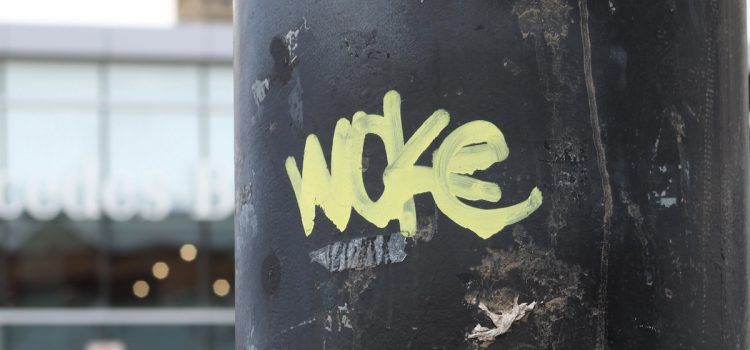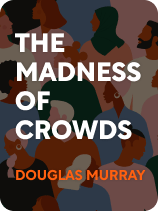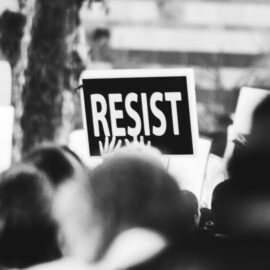

This article is an excerpt from the Shortform book guide to "The Madness of Crowds" by Douglas Murray. Shortform has the world's best summaries and analyses of books you should be reading.
Like this article? Sign up for a free trial here.
What’s woke culture? Why do many people believe that it’s gone too far and become destructive?
In The Madness of Crowds, Douglas Murray argues that Western society is under attack from woke culture. He argues that this ideology is obsessed with social justice, intersectionality, and identity politics. Murray contends that what appears on the surface to be a compassionate movement is dangerous at its core.
Continue reading to understand woke culture from Murray’s perspective.
What’s Woke Culture?
What’s woke culture? Murray contends that the New Ideology is hyper-concerned with social justice, as seen through the phenomenon of wokeism. To be “woke,” in its most basic sense, means to be keenly aware of instances of social injustice (for instance, racism or sexism) and to be on guard against them. However, Murray argues, modern woke culture has become more extreme and intolerant. It now sees any conceivable slight against members of minority groups as evidence of widespread oppression. It also encourages both a mob-like mentality and a sense of moral superiority in villainizing and shaming anyone who disagrees with wokeist ideas.
According to Murray, woke culture encourages people from the dominant social class (namely white people) to offer public displays of atonement for perceived injustices against minority groups. For example, a white person might apologize to a Black person for enjoying white privilege (in other words, for experiencing social, economic, and other advantages due to society being inherently racist toward non-white people). They might give this apology despite not being responsible for the race they were born into, and despite civil rights legislation largely erasing, Murray argues, any systemic advantages for white people.
Murray also argues that public displays of atonement like the one described above usually aren’t genuine, empathetic reactions to the traumas minorities have experienced. Instead, they’re often disingenuous gestures meant to protect the person giving the apology from public humiliation, or to help that person to ingratiate themselves with the minority group for personal gain.
Intersectionality
One aspect of woke culture is intersectionality. This theory again argues that multiple groups within society—particularly women, LGBTQ+ people, and racial minorities—suffer consistent, systematic oppression. It also states that certain people might fit into more than one category of marginalized identity (for example, they might be both Black and LGBTQ+) and thus experience overlapping discrimination.
Murray believes intersectionality’s supporters falsely insist that the more discrimination a person experiences, the better they understand how oppression functions in society, thus making them capable of superior moral insights into how to fix it. Further, intersectional activists argue that because marginalized groups share similar circumstances, they also share solidarity with each other in achieving emancipation from oppression. In working to free itself, each group helps liberate the others and thus removes oppression from society in general. Murray argues the contrary: that these groups often have contradictory and even antagonistic aims.
Identity Politics
Another aspect of woke culture is identity politics. Murray explains that this involves individuals, particularly those belonging to minority groups, considering that minority identity to be their most important political and social attribute. Aligning with the interests of that minority group—and battling perceived oppression of it—becomes the primary way they engage in politics. This creates a divisive us-versus-them mentality that makes society more fractious and combative—each group is predominantly concerned with its own interests at the expense of others’ interests.
| Common Humanity Versus Common Enemy Identity Politics In The Coddling of the American Mind, Lukianoff and Haidt argue that identity politics isn’t necessarily harmful if it’s used in its “common-humanity” form. Within this framework, a person may still be fighting for the rights or interests of a particular group, but in doing so, they aim to ensure that the playing field is the same for all other groups. Humanity itself theoretically benefits from added liberty and opportunity experienced by all parts of society. For example, Martin Luther King, Jr. stressed that Black Americans simply wanted to share in equality among all races and that success in that endeavor would bolster the overall dignity and moral strength of all American society. However, if the emphasis of identity politics is placed instead on blaming a mutual oppressor (such as a dominant economic class or race), this is “common-enemy identity politics.” This is the form of politics that Murray argues drives people toward primal, toxic attitudes of tribalism and competition. |

———End of Preview———
Like what you just read? Read the rest of the world's best book summary and analysis of Douglas Murray's "The Madness of Crowds" at Shortform.
Here's what you'll find in our full The Madness of Crowds summary:
- That Western society is consumed by social justice and identity politics
- Why we must combat this ideology and restore opportunities for disagreement
- How conservative viewpoints are being silenced and possible remedies






